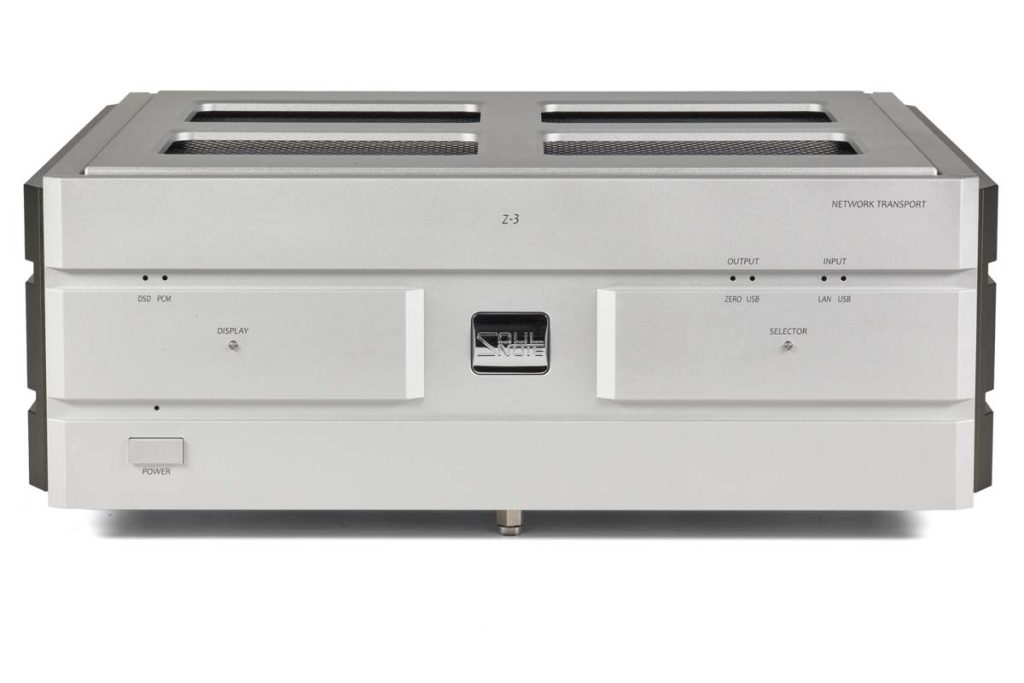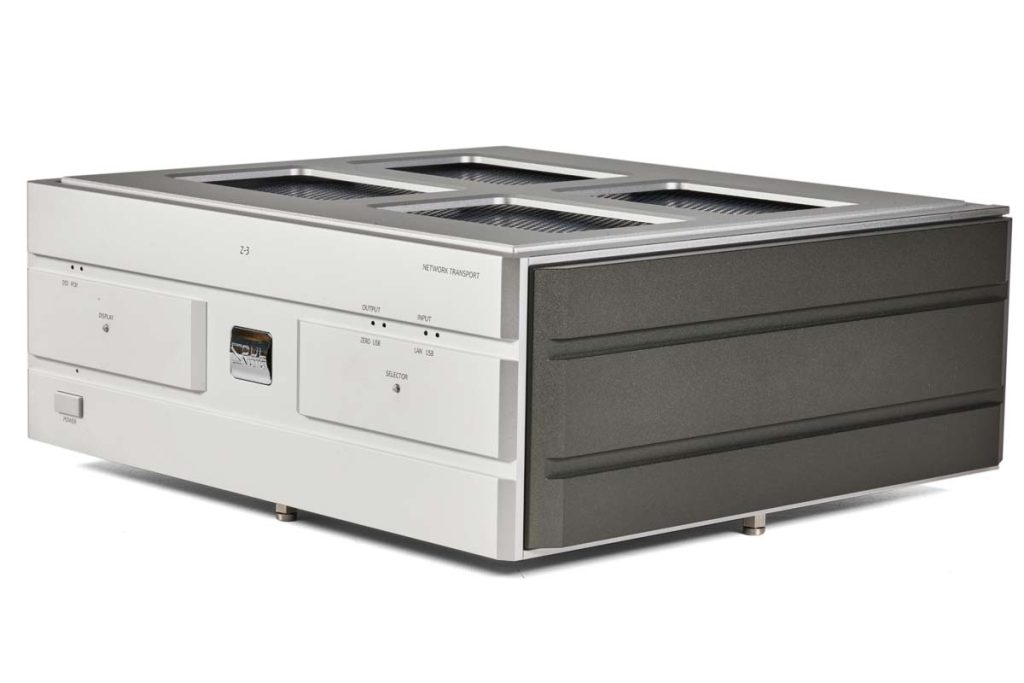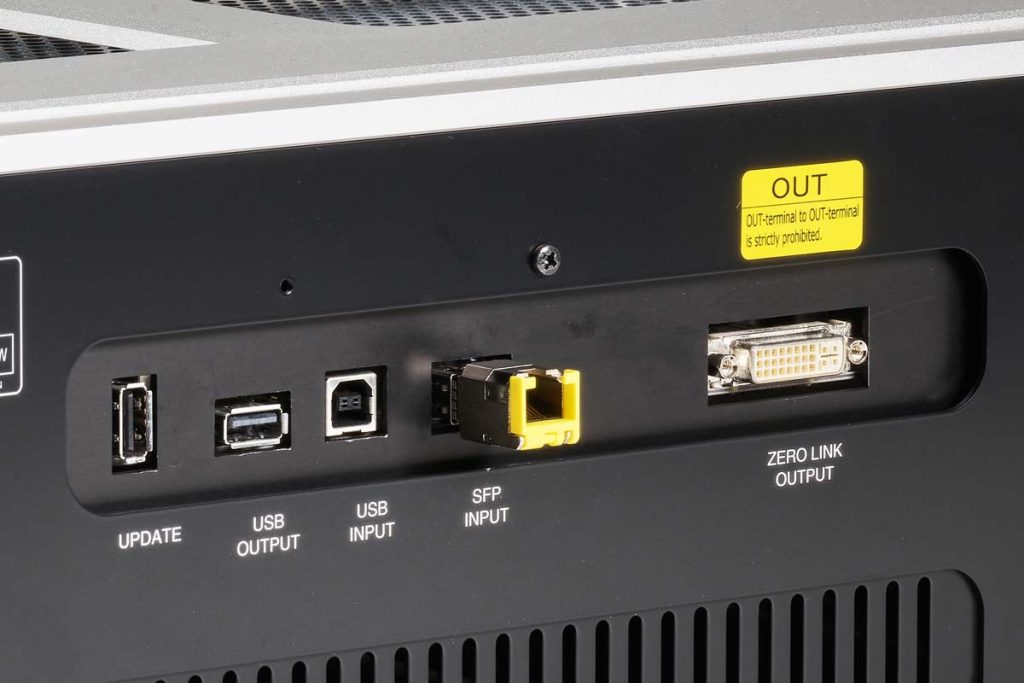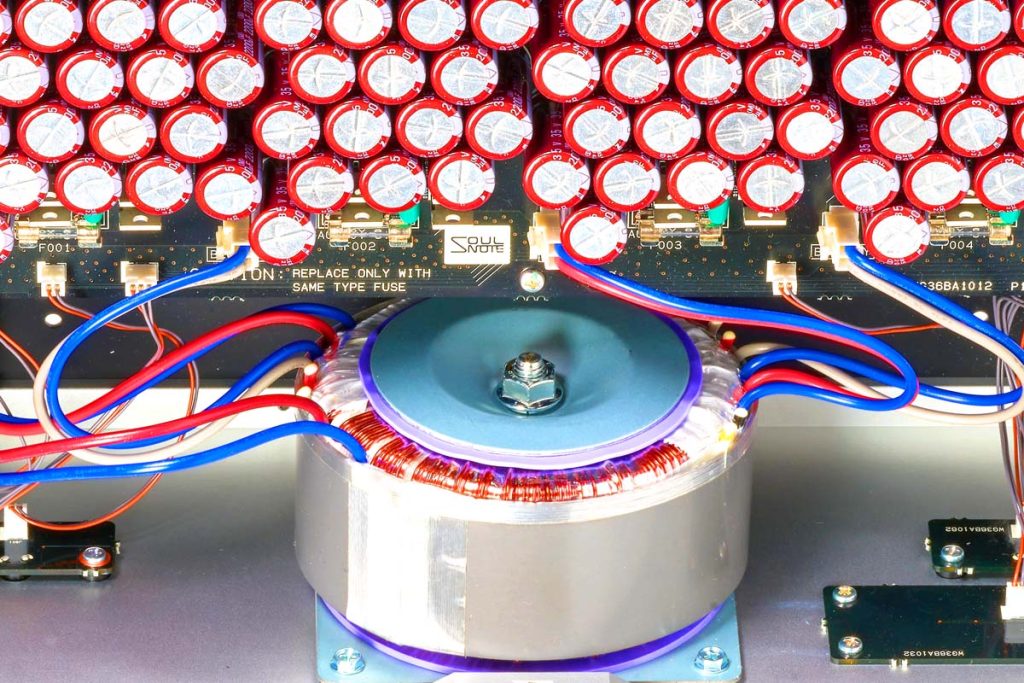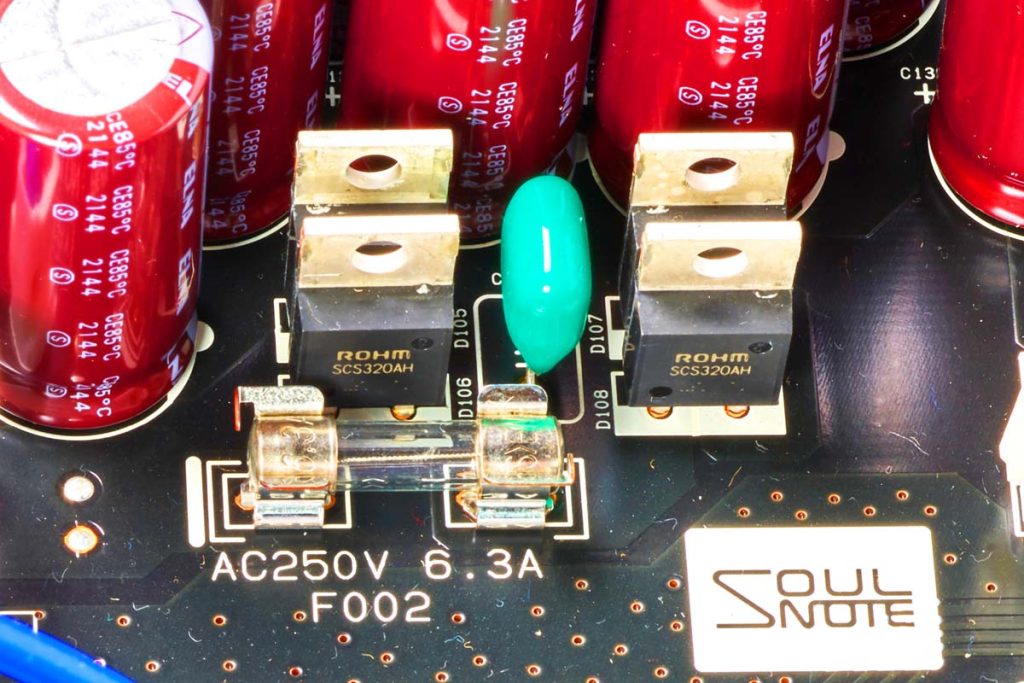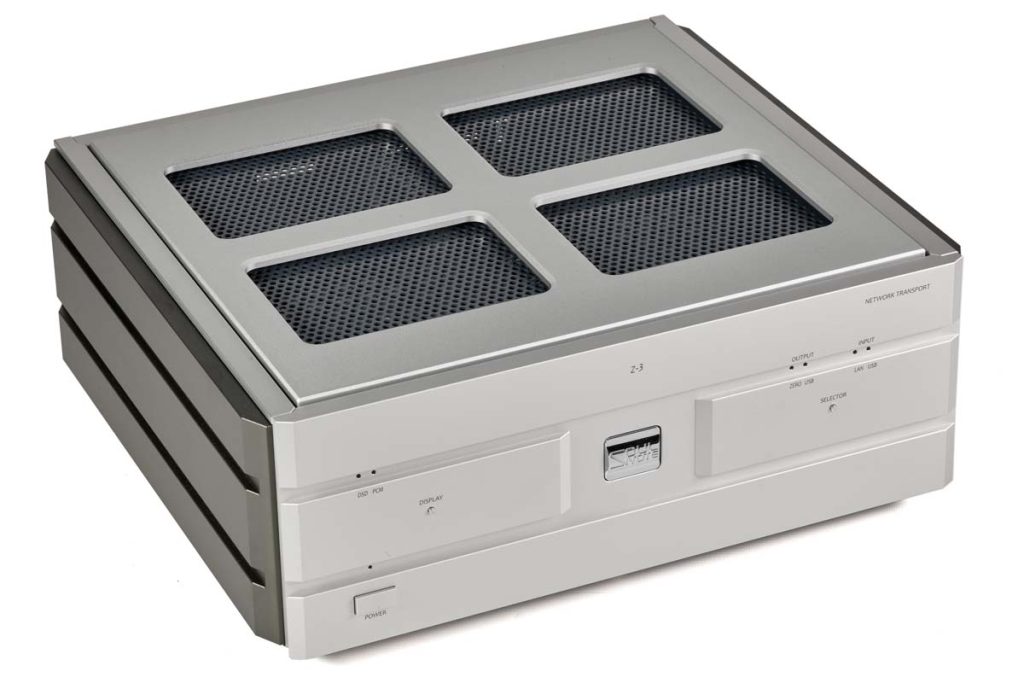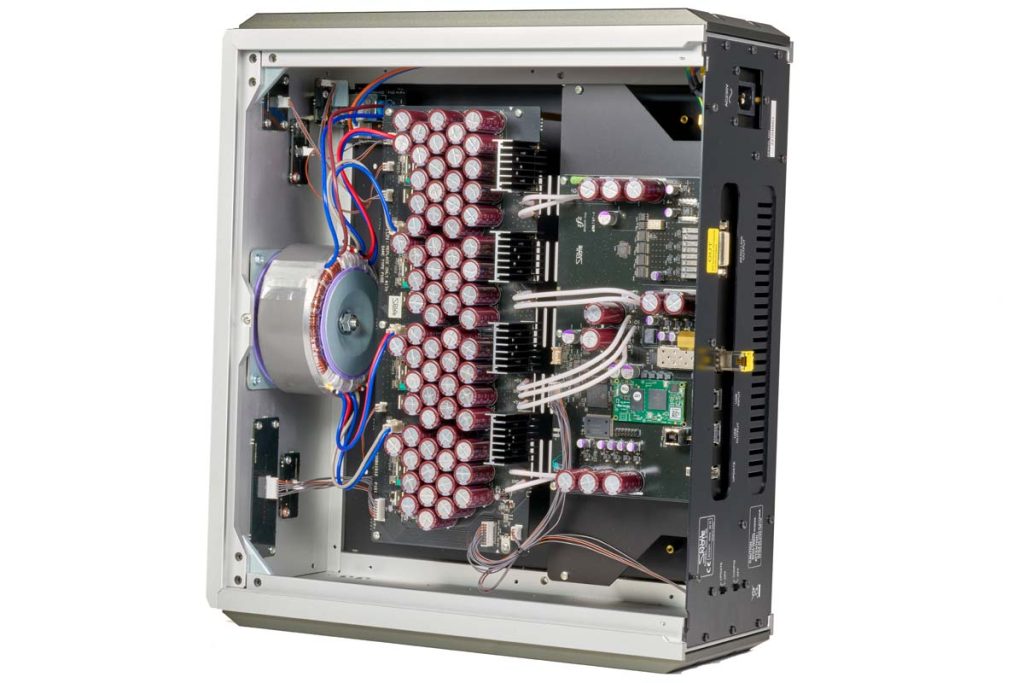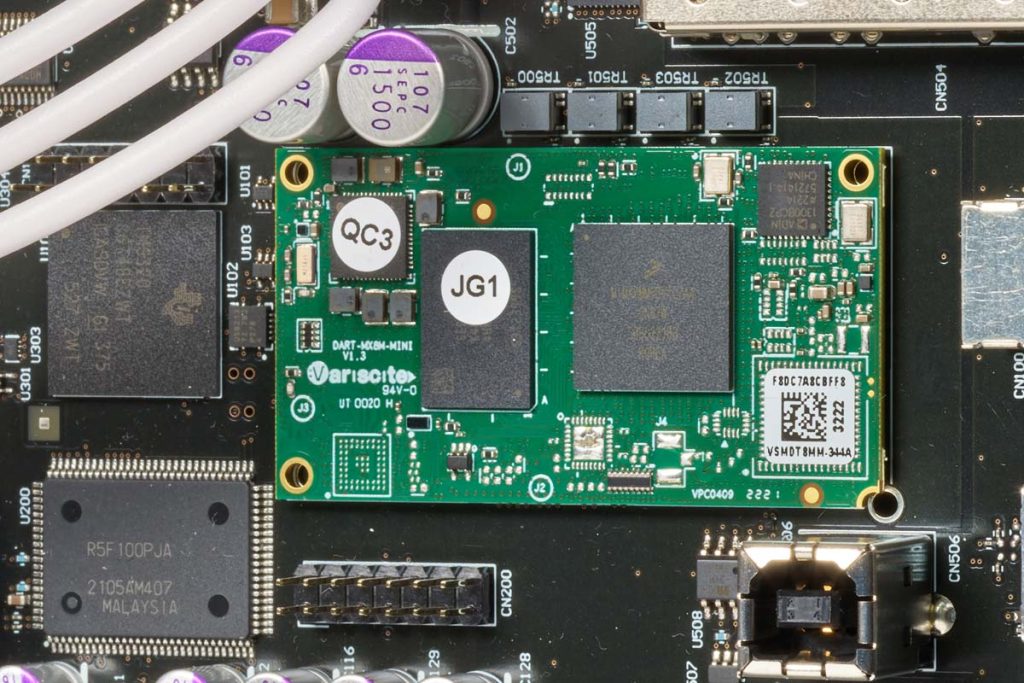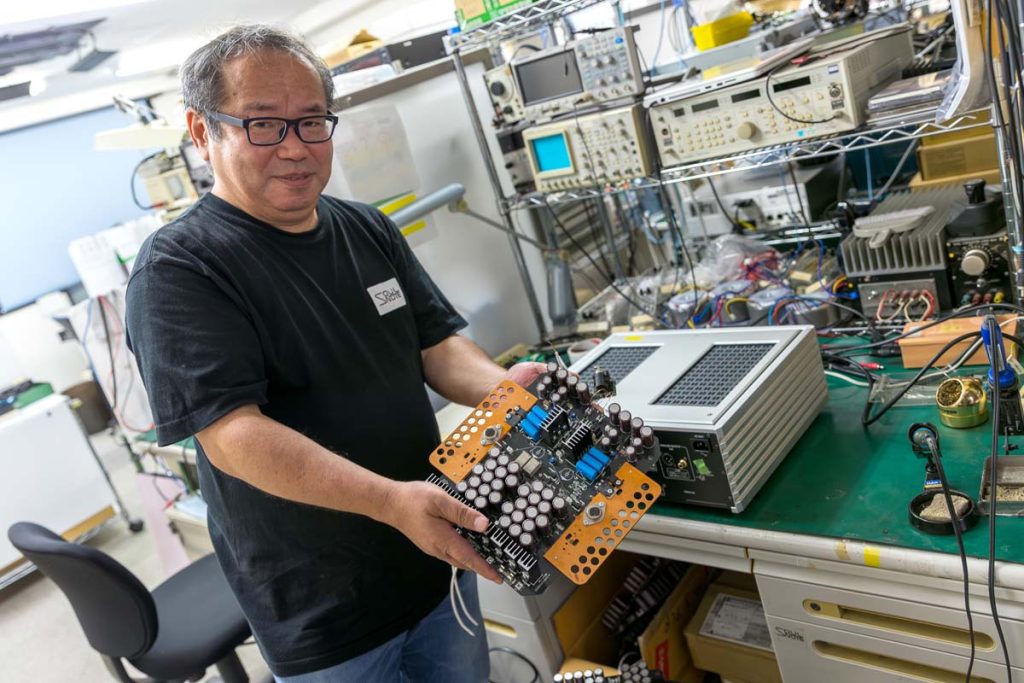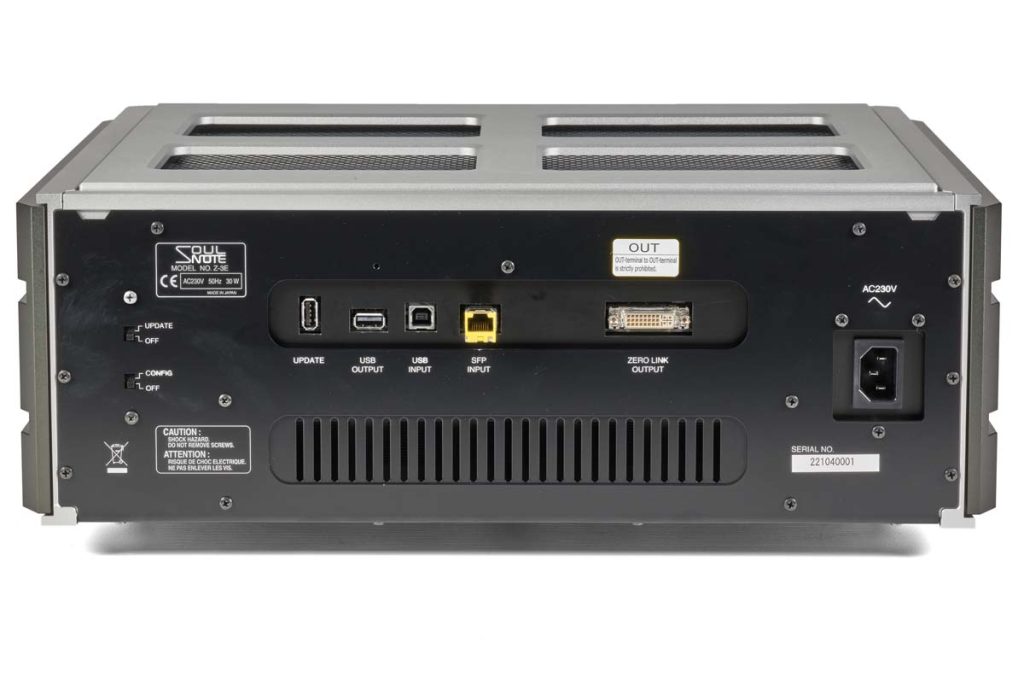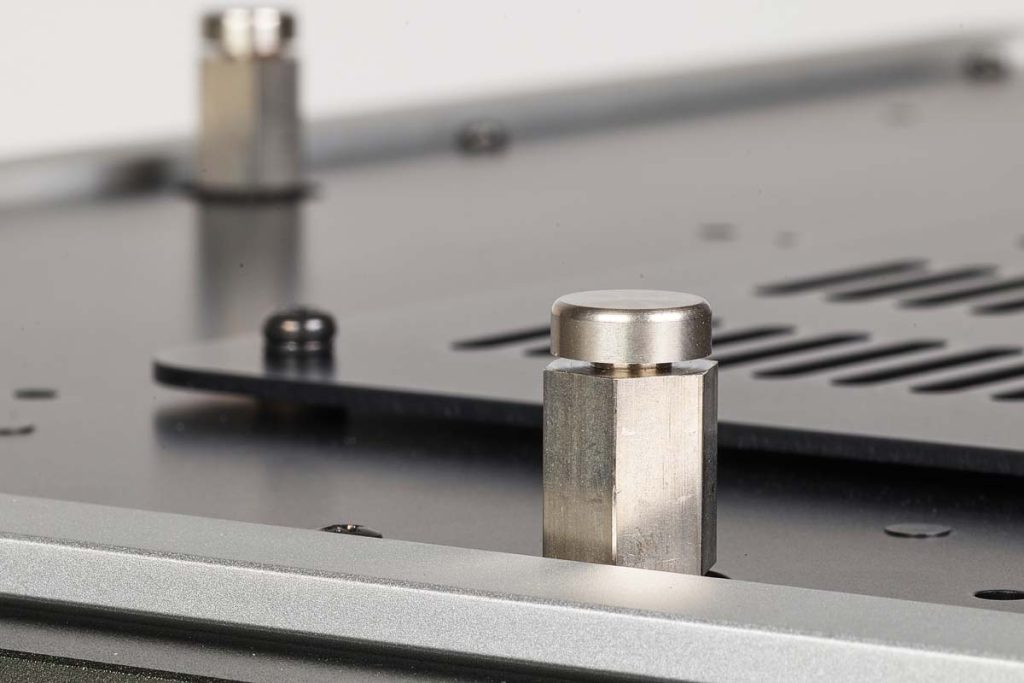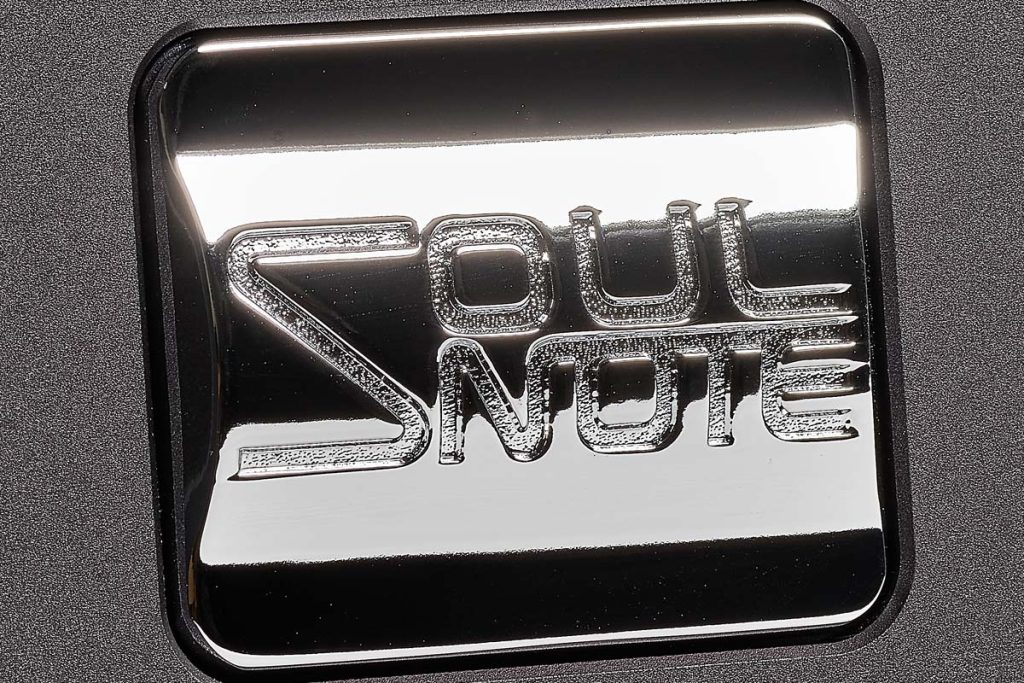Normally, manufacturers present their components to us in the listening room and explain which tricks they have used to master this or that technology particularly well. With the Soulnote Z-3, the chicken/egg phenomenon is reversed for once: With Zero Link, the Japanese have created such a potent transmission standard that a suitable streamer had to be constructed for it: let’s talk about a single-track genius who gets everything more right by simply leaving it be.
Unlike his deliberately minimalist streamer Soulnote Z-3, Hideki Kato is a multi-talented engineer with a passion for detail. To describe the engineer as an uncompromising sound tinkerer is apt, but fails to tell the whole story. When the former Marantz developer stopped by the editorial office for a coffee shortly before this year’s HIGH END, I asked him whether he was considering adding a volume control to his exquisite SACD player and DAC S-3 – that would be a nice bonus for owners of active loudspeakers. This sent Kato into what seemed like a brooding standby. After a short pause, he decisively wagged his index finger and replied: “No, no, no!” – that was not an option. Digital level controls were no good (keyword: loss of resolution), and analog control meant distortion and therefore sound-degrading components in the signal path. In the P-3 preamplifier, he went to enormous lengths to ensure that everything ran smoothly – this could not be transferred to the player for packaging reasons alone.
I was not surprised by the counterattack. As a self-confessed activist, I ask this of almost every developer I come across, and I know the understandable counterarguments. Nevertheless, there was something about Kato’s answer that gave me pause: Due to his conditioning, he initially had trouble grasping the intention of my question. As the mastermind behind Soulnote, the quirky developer has set out to raise the term “high end” to a new level of perfection. He pursues this goal so meticulously that one should speak more of a dogma than of mere unwillingness to compromise. The boundary between technical finesse and (sound) philosophy is fluid in his work. And because he enjoys almost limitless freedom as a developer of the Japanese CSR Group and knows nothing of accounting red tape, he constructs every element of his gems unconditionally to perfection. So why, he must have wondered, would anyone want to spoil something as perfect as the exclusive components of his “three-series” with unnecessary ballast? Meanwhile, he didn’t blame me for asking: he seems to be used to such transgressions …
In order to realize his vision of the highest sound quality, Kato had to come up with a whole catalog of tricks, peculiarities and design details that are not only unique, but in their concentration are difficult to intuit even by industry experts. The trick that probably plays the central role in the Z-3 is the proprietary Zero Link digital interface. In this case, “Zero” stands for the effect of the transmission on the signal: zero! In formal terms, these are DVI plugs and wires, as used in the 2000s for connecting PC monitors. Kato uses the lockable connection because the 24 plus 5 pins offer many possibilities and because the bandwidth is enormous. In addition, the creators of the standard provided an assignment for clock transmission from the outset.
Kato uses the interface to establish a direct connection between the streamer and the connected DAC (analogous to the I2S standard) – without a detour from processor to processor. The media player of the Z-3 renders digital audio signals from the network directly into the native resolution of the DAC chip (32 bit/768 kHz for the ES9038Pro of the S-3). This allows it to work without up- or oversampling. In this way, the developer prevents the dreaded pre- and post-ringing of the converter and can also do away with the digital filter, which also alters the sound – three or four birds with one stone. A needle impulse thus comes out of the converter as a razor-sharp impulse. Since all Soulnote digitalists use the same eight-channel ES9038Pro, the Z-3 can apply this trick to all potential playing partners without additional communication.
But before we dive any deeper into the technical details, let’s talk about what exactly the Z-3 actually is. This, we can keep brief, because in principle the “bridge” is nothing more than a flawless media player in an ultra-massive 20-kilo housing. The streamer receives data from the network or via USB and prepares it in bite-sized form for the D/A converter – and that’s it. By far the biggest feature of the Z-3 is the omission of everything else: It has no DAC of its own, no internal clock, has no web interface for in-depth setup, it can’t log in to streaming services and so on. The “Network Transport” is controlled via any DLNA app, OpenHome, Diretta or Roon, which worked without any problems or crashes during our almost five-week test phase – another advantage of the reduction. And in the end, the concept is not too stripped down either: after all, the most important hi-fi services (such as Qobuz and Tidal) can now be integrated via many of the remote interfaces.
There is a good reason for this purism, which has been pushed to the limit: Kato knows that processors and electronic components can also suffer under stress. By limiting his Z-3 to the bare essentials, he gives the streamer a calm and serenity that can also be heard – complete concentration on the sound. However, the reduction leads to a peculiarity that must be kept in mind: The streamer cannot even be switched on without external clocking. The D-2 (via USB) as well as the S-3 and D-3 (both via Zero Link) are available as clock generators in the Soulnote portfolio, whereby the D-3 (also without an internal clock generator) is dependent on the help of the X-3 reference clock.
The built-in media player is supported by a whole phalanx of technical refinements, all aimed in the same direction: Resonance control. Almost all of the streamer’s components, circuit boards, internal wiring and connections are “floating”: they can be moved and have at least some play. This logic is also continued in the oversized power supply unit. Instead of a few high-capacity electrolytic capacitors, Kato uses 70 small electrolytic capacitors and 16 ultra-fast (and expensive) SiC (silicon/carbon) rectifier diodes. The low mass and mobility of the components means that they can efficiently dissipate vibrations and resonances to the surrounding air in the form of heat. Even the loose housing cover plays a part in this: it prevents congestion and ensures that the air volume inside the housing is “mobile” enough to absorb even the finest vibrations from the components – the Z-3 simply exhales everything that disturbs it. In addition, the beefy streamer with its needle-pointed spikes stands on a wooden board supplied. If this is raised (we did this with small spike coasters), the base also participates in the resonance digestion.
To ensure that the ultra-clean signal processing is not disturbed by external influences, Kato relies on an optical SFP network access. This not only acts as a galvanic isolator between the router, switch and Z-3, but also enables endlessly long cable runs without loss. In the event that the owner of the streamer does not want to accept that an opto-converter has to be purchased specifically for the network, Soulnote includes a plug adapter in the scope of delivery of its bridge – this at least ensures electrical isolation.
The Soulnote recipe is therefore obvious: reduce the functions of the respective component to what is absolutely necessary and execute these circuits with technical sophistication and perfection. This also clarifies the question of what to do with such a reduced streamer: Listen to music, what else …!
And that brings us to the trickiest part of the device presentation – the sound of the Z-3. Not to make it unnecessarily exciting: The streamer simply blew our socks off. If ever there was a sonic equivalent of the terms “calm” and “serenity”, then it may have been the moment when I first streamed Koyaanisqatsi from Philip Glass’ soundtrack of the same name from our server – in a dismal 16/44. The pairing of Z-3 and S-3 flooded the room with a menacing, rumbling choir. The gradually swelling strings and pads reveal another quality of many Soulnote machines: they unfold almost limitlessly into the depths of the room, fanning out and occupying an endless, yet sharply outlined and defined stage. This makes exquisitely captured club or live concerts one of the central domains of Japanese electronics. The streaming team plays with the finest dynamics “against a pitch-black background”, as some colleagues would put it.
However, the aforementioned tricky bit about the evaluation lies hidden in the term “combo”: As the Z-3 and S-3 entered into a forced marriage in our listening room, I am unable to say how the individual performances of the two protagonists can be precisely categorized and classified. But since we have already experienced the great D/A converter D-3 in its outstanding work, I’ll go out on a limb and say that the Z-3 is likely to prove to be one of the best of its kind as well.
HIDEKI KATO
A story about Soulnote cannot work without stories about Hideki Kato. Why? Because the former Marantz developer is the heart and soul of Soulnote. In the early 2000s, Kato was recruited by the CSR Group to develop professional audio concepts (such as walkie-talkies) and – fasten your seatbelts – karaoke systems. In parallel to his successful work, he was allowed to use CSR’s infrastructure for his – initially rather hobbyist – hi-fi knick-knacks. This is a key to understanding the sophistication and idiosyncrasy of Soulnote electronics: their basic concepts were developed outside the “surveillance zone” of product management, and CSR’s accounting department probably only realized the scope of Kato’s developments when the first demo systems were playing.
Accompanying Equipment
Digital sources: Lumin X1, Silent Angel Munich M1, Audiodata MusikServer MS II, Audio Note CD 5.1x | D/A converter/preamplifier: Aavik D-580, Auralic Altair | (Power) amplifier: Luxman M-10X, Burmester 216 | Speakers: Piega MLS 2 Gen2, Wilson Audio Sasha DAW, Lyravox Karlsson (active loudspeakers incl. DAC), DALI Epic DAC. DAC), DALI Epicon 6 | Cables, accessories: AudioQuest, ViaBlue, in-akustik | Rack: Finite Elemente, Solidsteel
Streamer Soulnote Z-3
Concept: ultra-puristic network bridge | Signal inputs: SPF (optical network), USB | Outputs: Zero Link, USB | Supported PCM formats: AIFF, WAV, FLAC, Apple Lossless, MP3, AAC (max. 32 bit/768 kHz) | Supported formats (DSD): dsf, diff (max. 22.6 MHz) | Power consumption: approx. 30 W | Accessories: spike board, spikes, zero-link cable, mains cable | Finishes: Silver, black | Dimensions (W/H/D): 45/17/39 cm | Weight: 20 kg | Warranty period: 3 years after registration | Price: around €12,990
IAD GmbH
Johann-Georg-Halske-Straße 11
41352 Korschenbroich
Phone +49 2161 6178313
info@iad-gmbh.de


